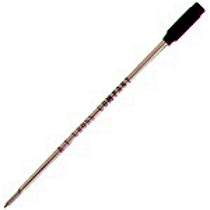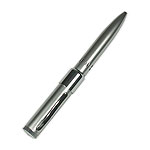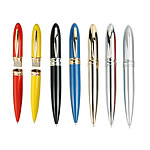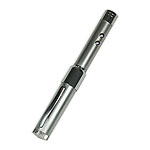usb pen
A usb pen is a pen shaped drive consists of a NAND-type flash memory data storage device integrated with a USB (Universal Serial Bus) interface and a ball-point pen. USB flash drives are typically removable and rewritable, much smaller than a floppy disk, and most weigh less than an ounce (30 g). Storage capacities can range from 64 MB to 256 GB with steady improvements in size and price per capacity. Some allow 1 million write or erase cycles and have 10-year data retention, connected by USB 1.1 or USB 2.0.
USB pens offer potential advantages over other portable storage devices, particularly the floppy disk. They have a more compact shape, operate faster, hold much more data, have a more durable design, and operate more reliably due to their lack of moving parts. Additionally, it has become increasingly common for computers to be sold without floppy disk drives. USB ports, on the other hand, appear on almost every current[update] mainstream PC and laptop. These types of drives use the USB mass storage standard, supported natively by modern operating systems such as Windows, Mac OS X, Linux, and other Unix-like systems. USB drives with USB 2.0 support can also operate faster than an optical disc drive, while storing a larger amount of data in a much smaller space.
Nothing actually moves in a flash drive: the term drive persists because computers read and write flash-drive data using the same system commands as for a mechanical disk drive, with the storage appearing to the computer operating system and user interface as just another drive.
A flash drive consists of a small printed circuit board protected inside a plastic, metal, or rubberized case, robust enough for carrying with no additional protection—in a pocket or on a key chain, for example. The USB connector is protected by a removable cap or by retracting into the body of the drive, although it is not likely to be damaged if exposed (but it may damage other items, for example a bag it is placed in). Most flash drives use a standard type-A USB connection allowing plugging into a port on a personal computer, but drives for other interfaces also exist.
Some USB pens also contain additional features like lasers, lights, cameras, voice recorders, and conference remotes
- 0 items







